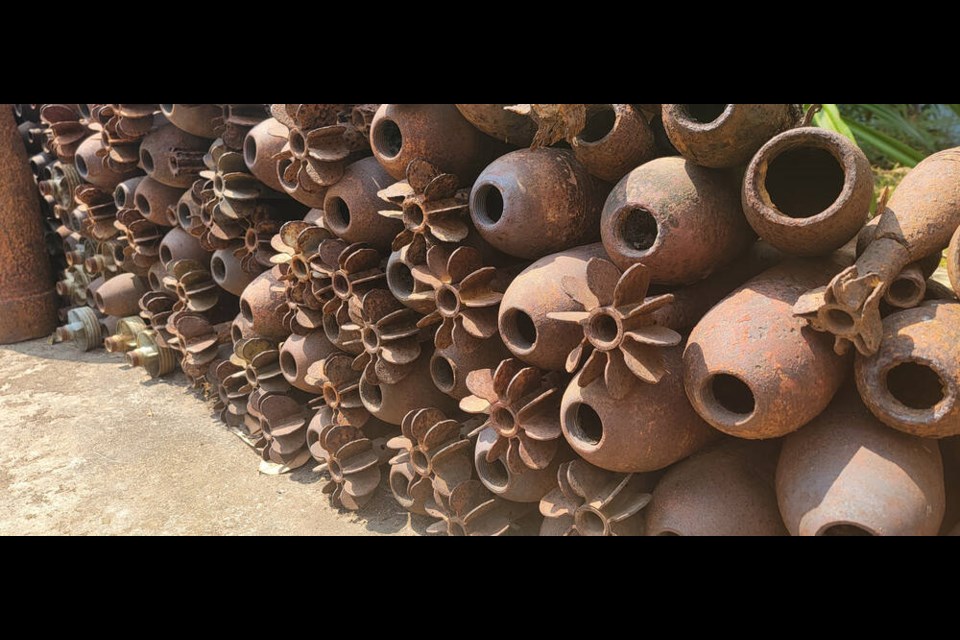A North Vancouver environmental firm is helping Cambodia rid its countryside of millions of deadly bombs and landmines that still claim victims, decades after the region’s armed conflicts came to an end.
Hatfield Consultants, which is based in the Harbourside area, is bringing expertise in big data and mapping to track down where the unexploded ordnance might be lurking.
Cambodia’s recent history has been more tumultuous than most. Through incursions by the North Vietnamese Army and bombing by the United States and South Vietnamese in the 1960s and 1970s, and various factions of a civil war seeking to control territory in the 1970s and 1980s, the country’s rural areas became littered with explosives.
By the time peace and stability arrived in the 1990s, there were an estimated 4 to 6 million landmines left in the soil along with an untold number of unexploded cluster bombs and aerial bombs.
“Of course, they had a huge problem. Thousands of people every year were being maimed and killed,” said Daniel Moats, director of environmental monitoring and assessment for Hatfield.
In the early 1990s, the Cambodian Mine Action Centre began the daunting task of seeking out and safely removing the deadly remnants of war. Hatfield was one of the early partners on the project.
Since then, the number of casualties has dropped to between 40 and 60 per year, a number that may sound high but is a tremendous improvement, Moats said. The country has a goal of being landmine-free by the end of 2025.
There are, however, many more unexploded cluster bombs, Moats said, which are unstable and easily detonated. Because most of the remaining bombs fell in rural areas, it is poor farmers and playing children who are most likely to be their victims.
“They are absolutely insidious. They last. They explode all the time. They can explode with very little contact if they’re almost armed. You just do not know,” Moats said. “Like landmines, they are victim-activated and they are still a huge, huge danger to the general population.”
Hatfield staff have been assisting doing spatial analysis, combining all the info that can be gleaned from official records and archives about where bombings occurred and building up single database that Cambodia can use to help narrow down where to focus their explosives removal efforts.
Previously in the region, Hatfield has worked on assessing the contamination from Agent Orange used to strip trees of their foliage during the Vietnam War and helping with the remediation of toxic chemicals left behind in the soil at former military bases.
For Moats, who has been in and out of Southeast Asia for 20 years, helping to right the wrongs of history has been deeply meaningful work.
“It’s an easy one to go to when people ask what the highlight of your career is – cleaning up massive, contaminated sites that pose huge risks for people who are living pretty close to the earth. It’s extremely gratifying to be involved with it,” Moats said. “It’s the kind of job that you dream to have when you’re coming out of university.”
Other projects the North Vancouver company has worked on in Canada include tracking forest fires with infrared satellite images, partnering with the Canadian Space Agency to monitor endangered North Atlantic right whales and using to AI predict their movements, and measuring the amount of biomass hidden beneath forest canopies.



